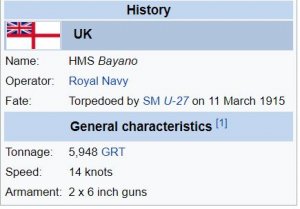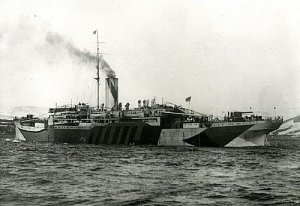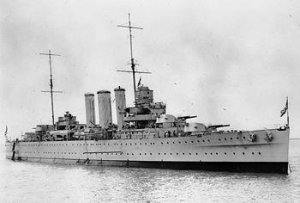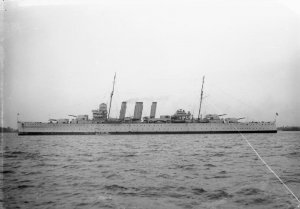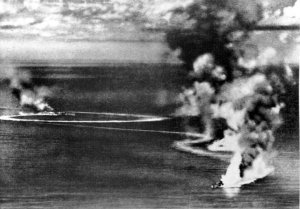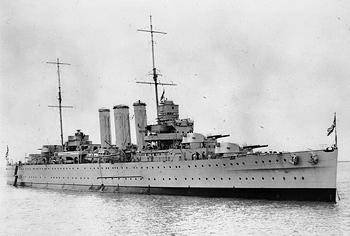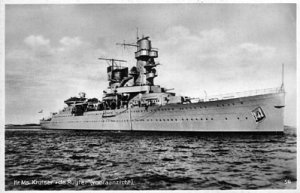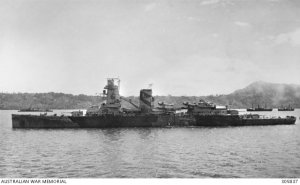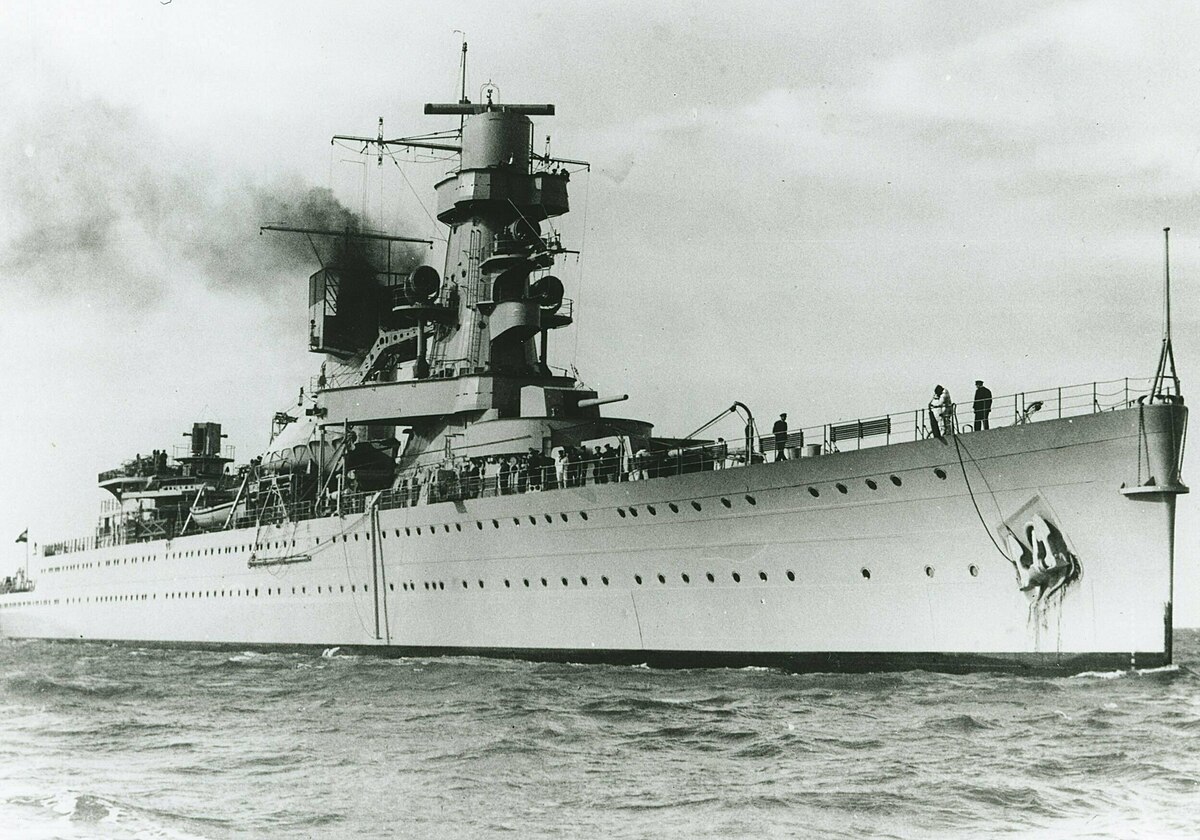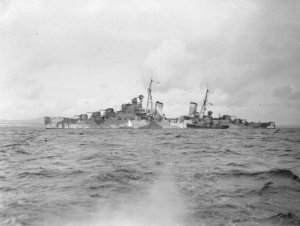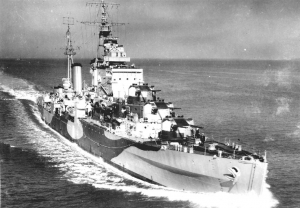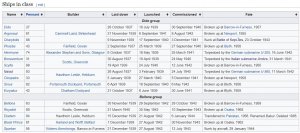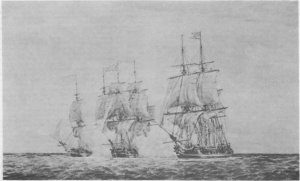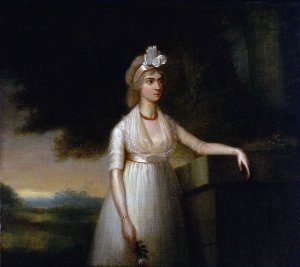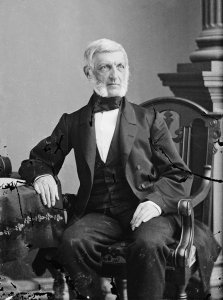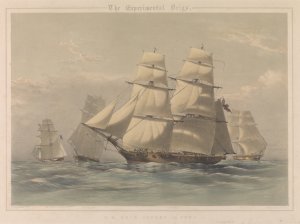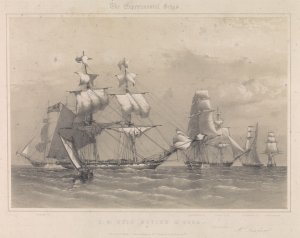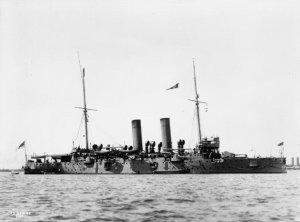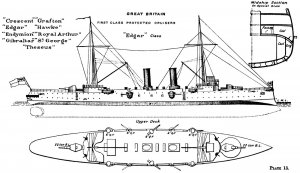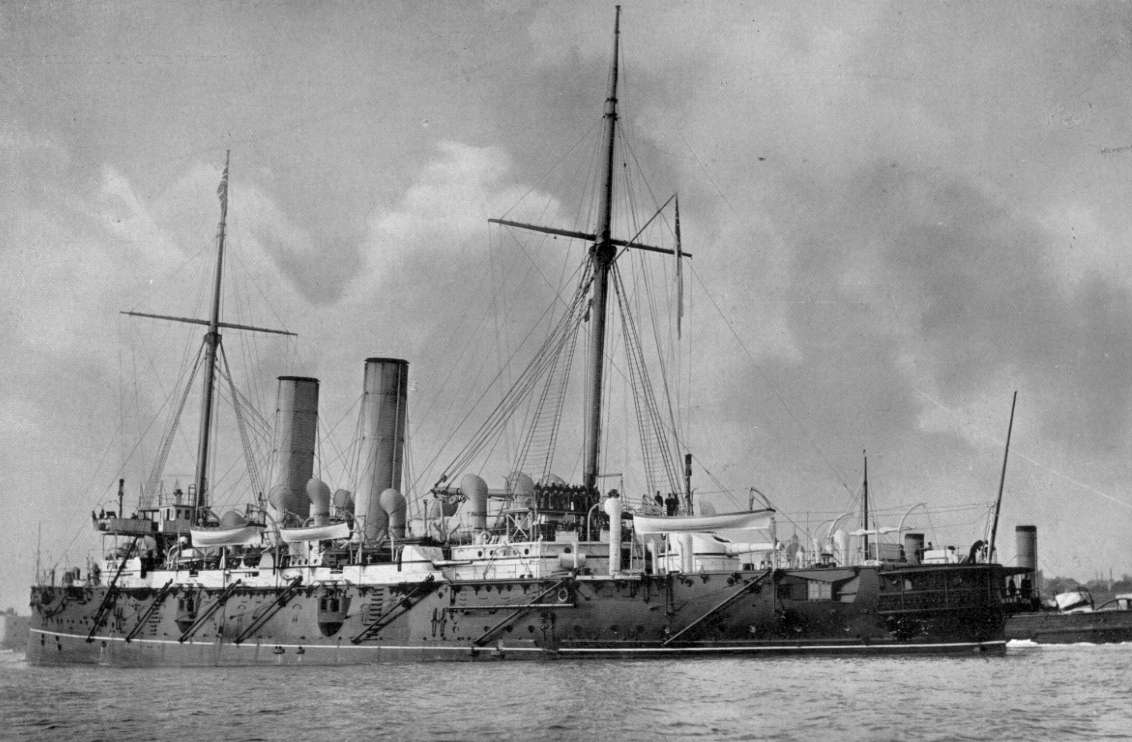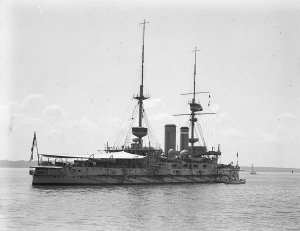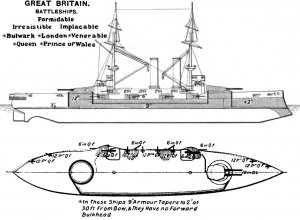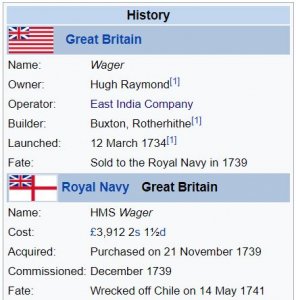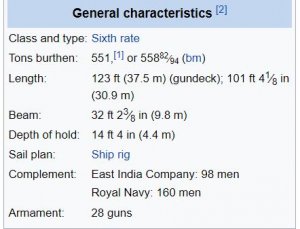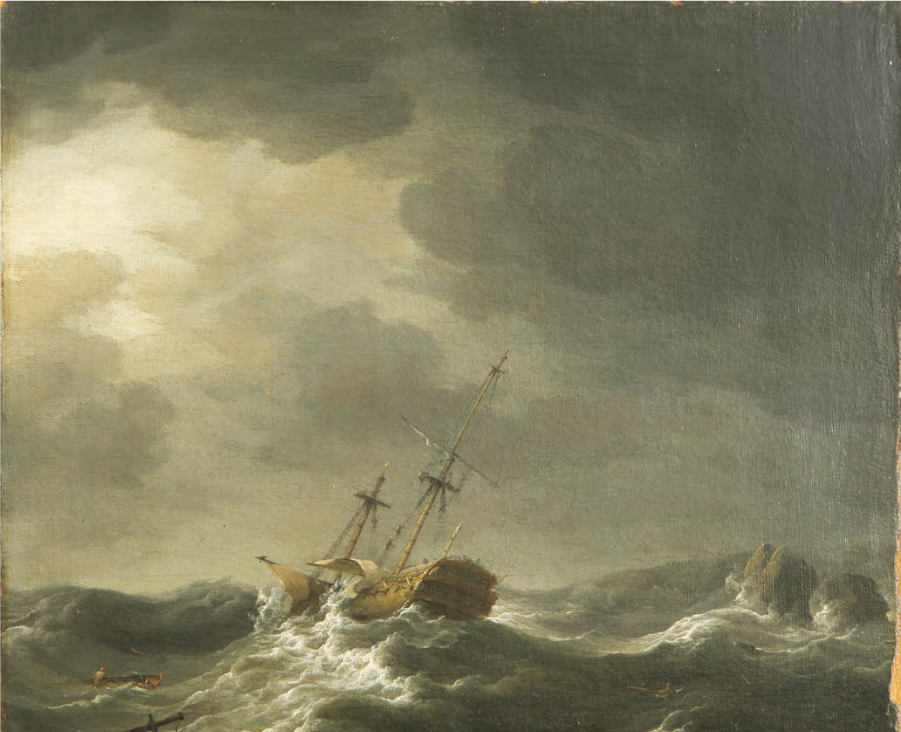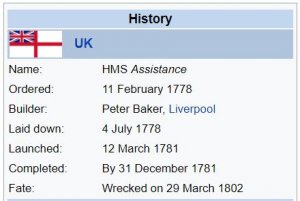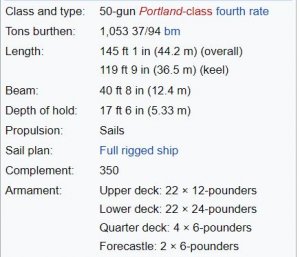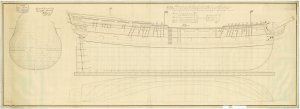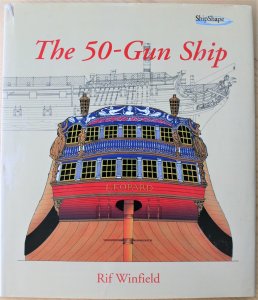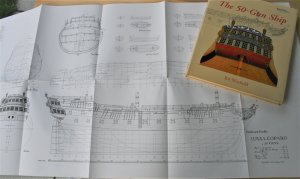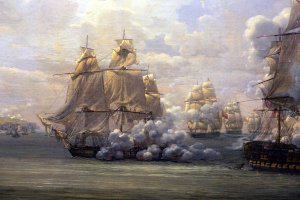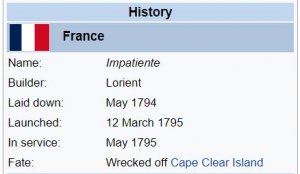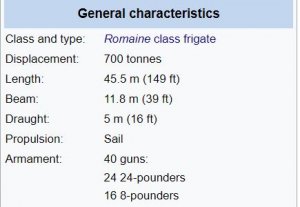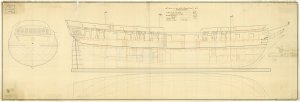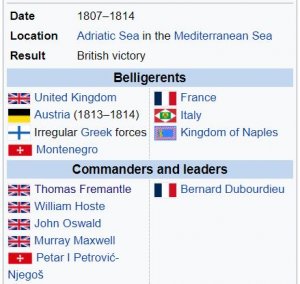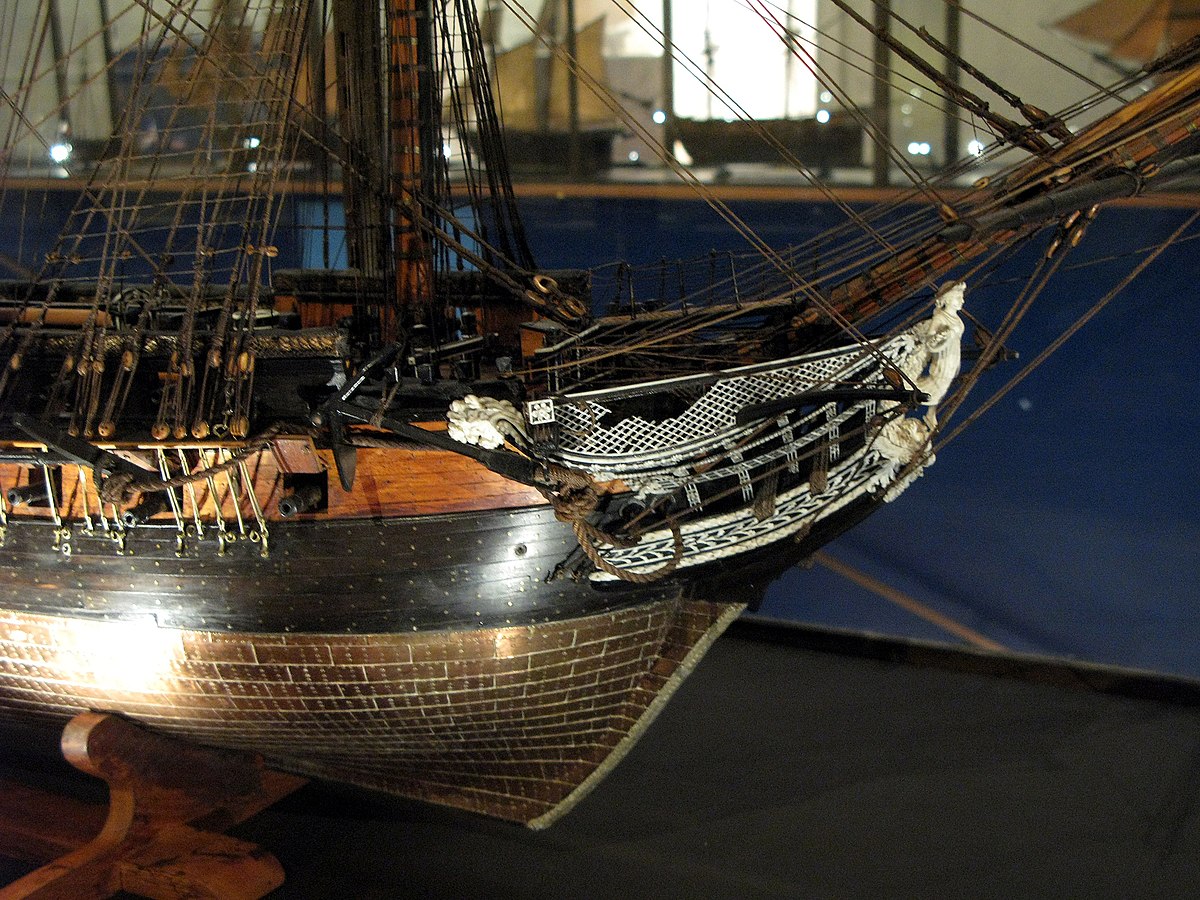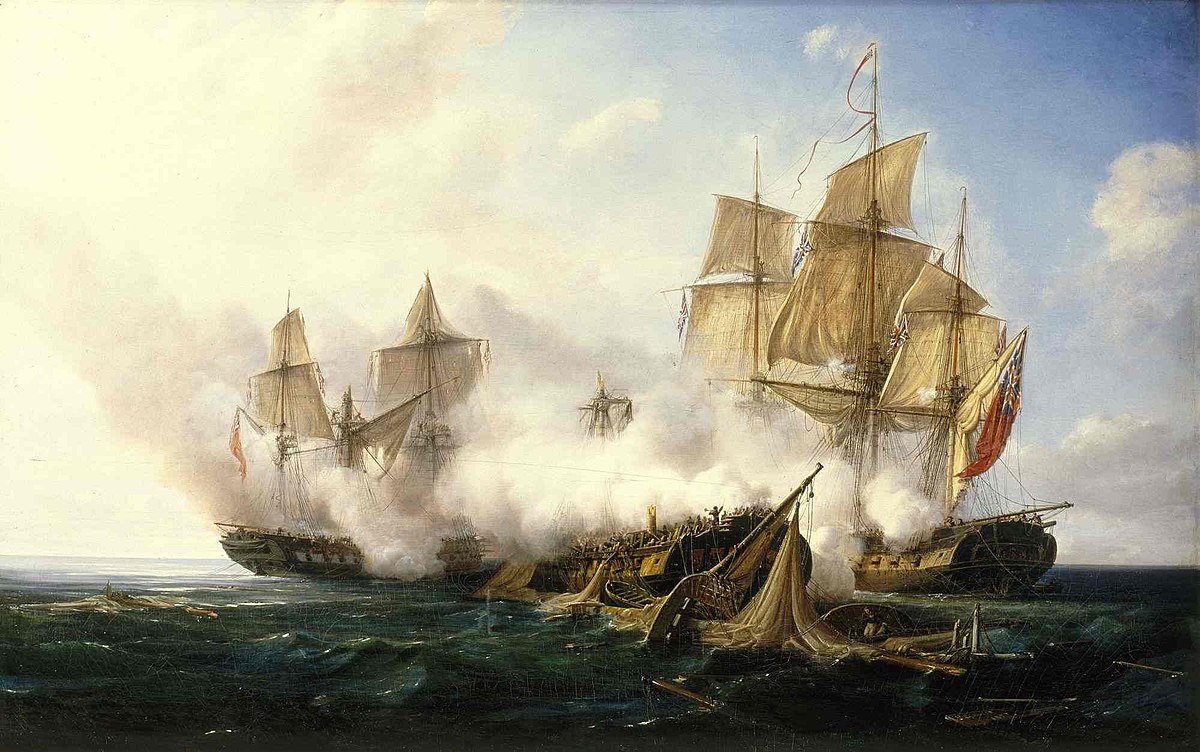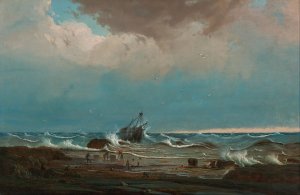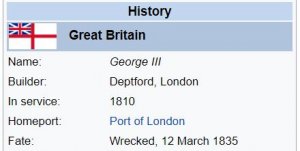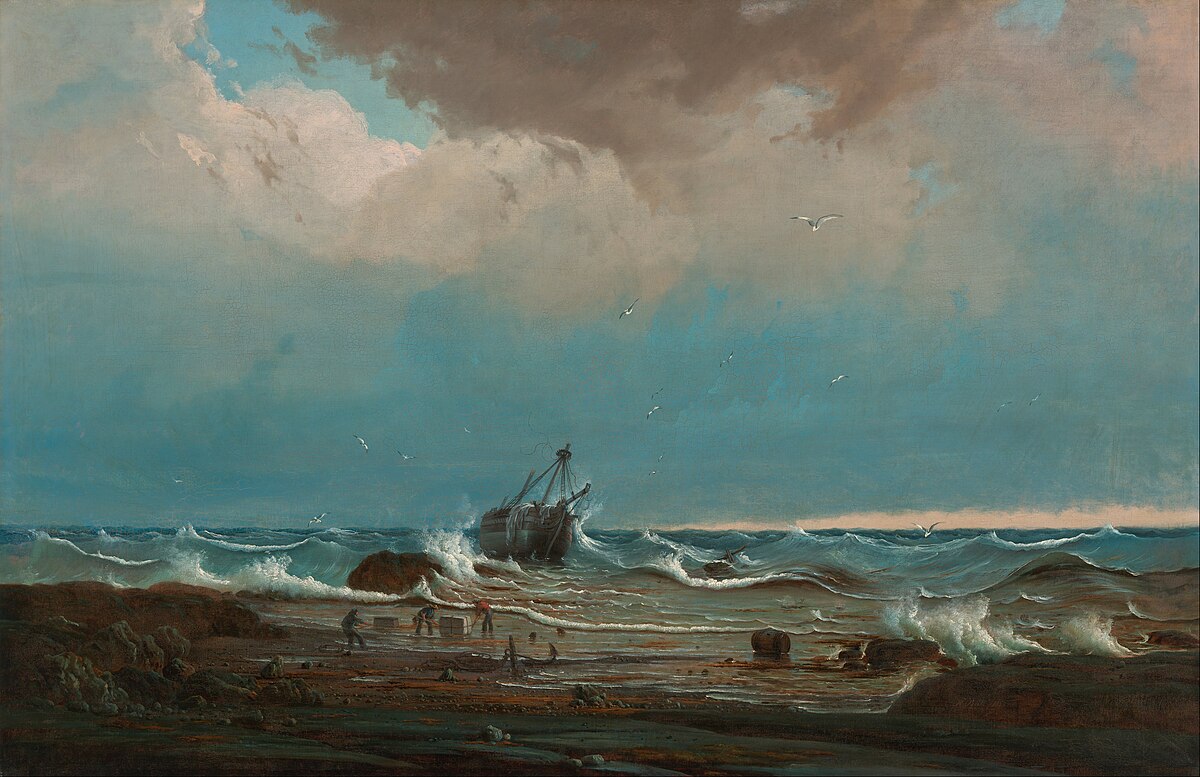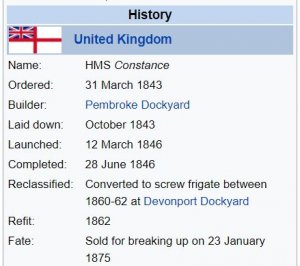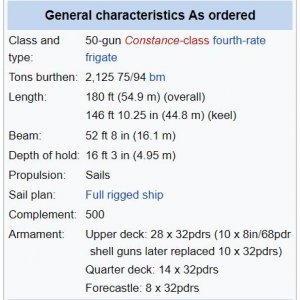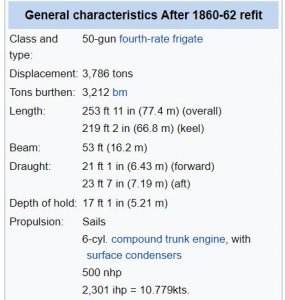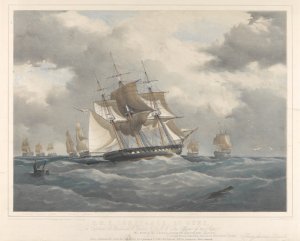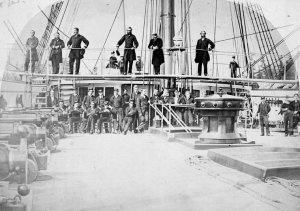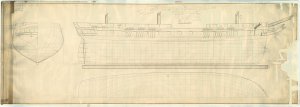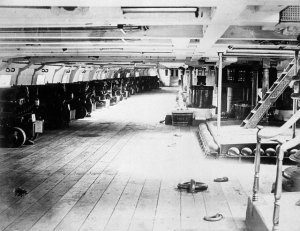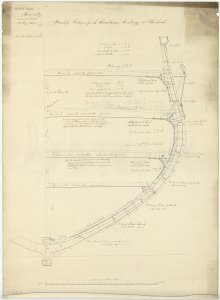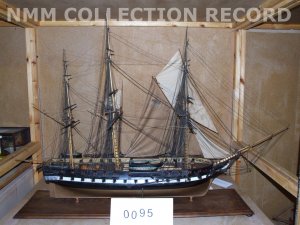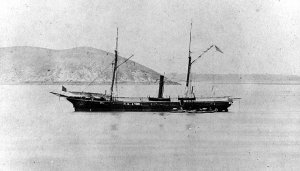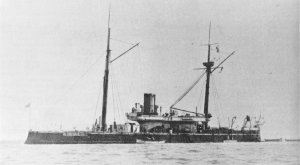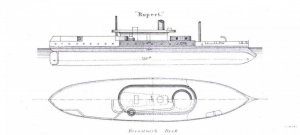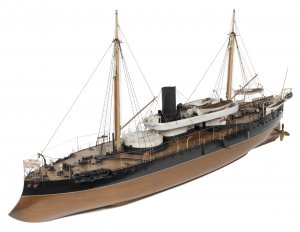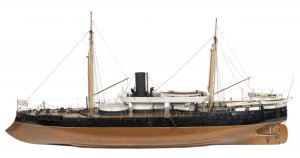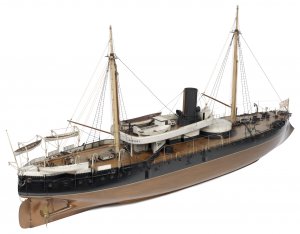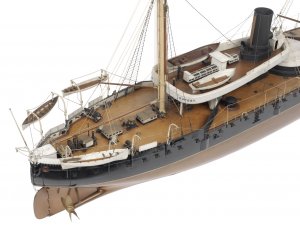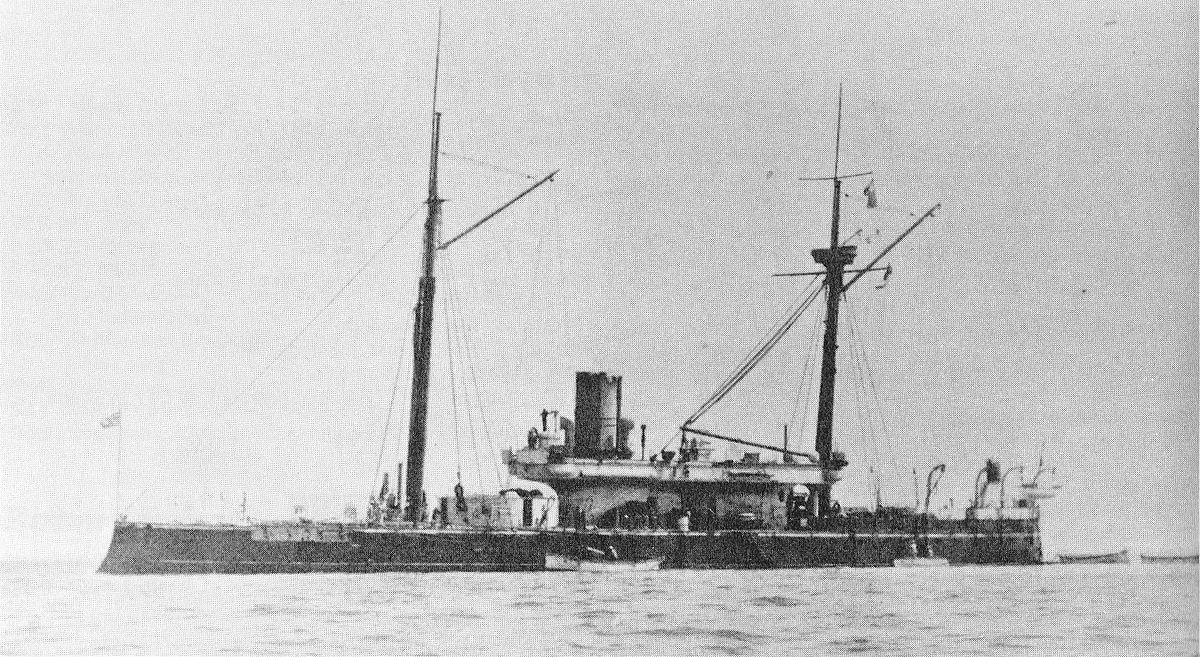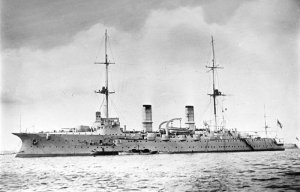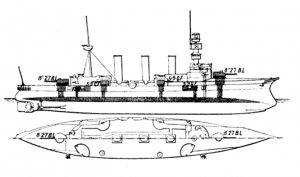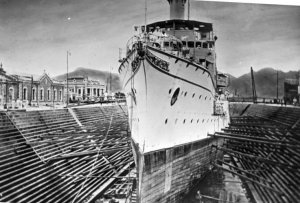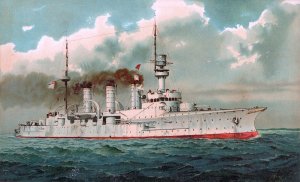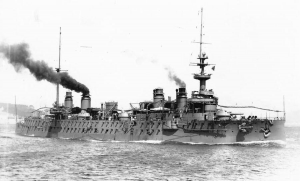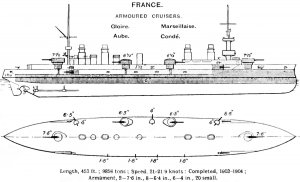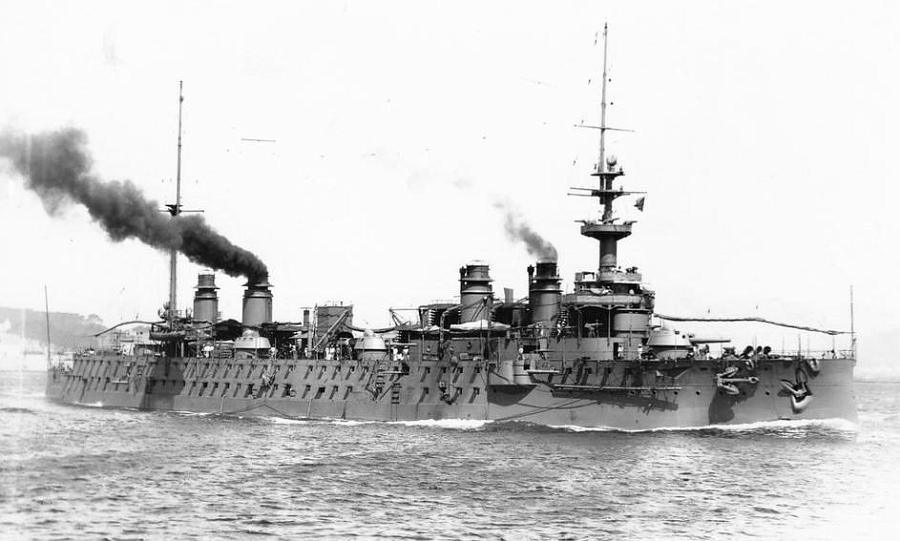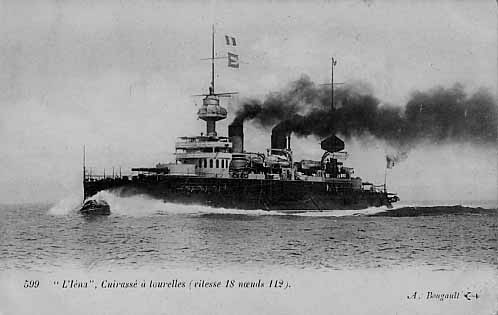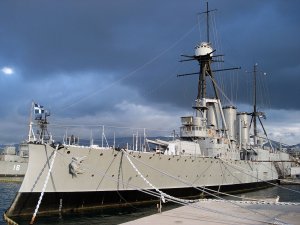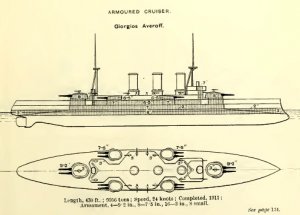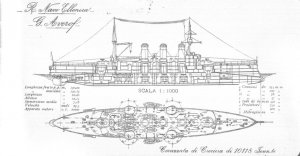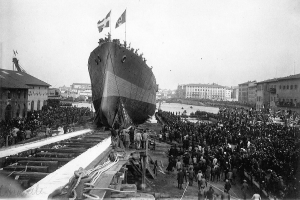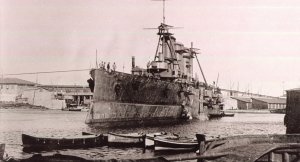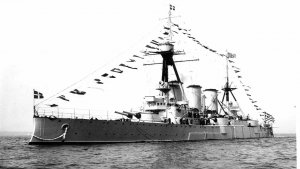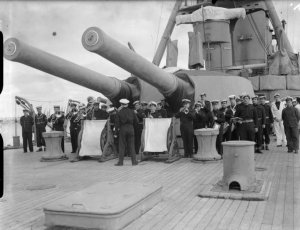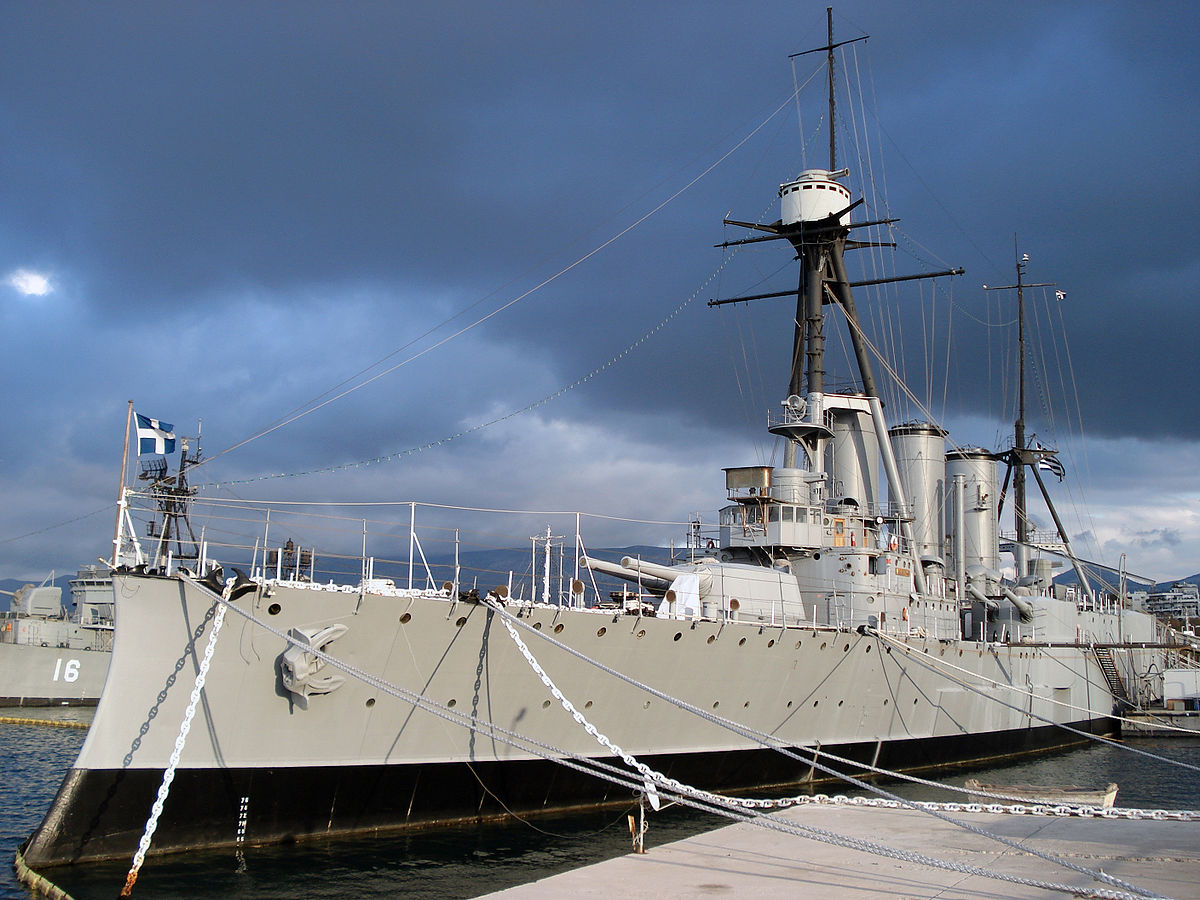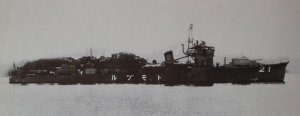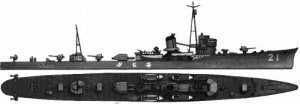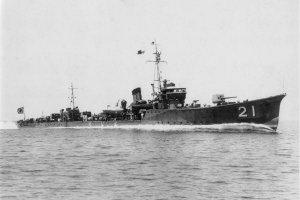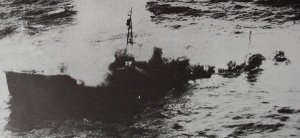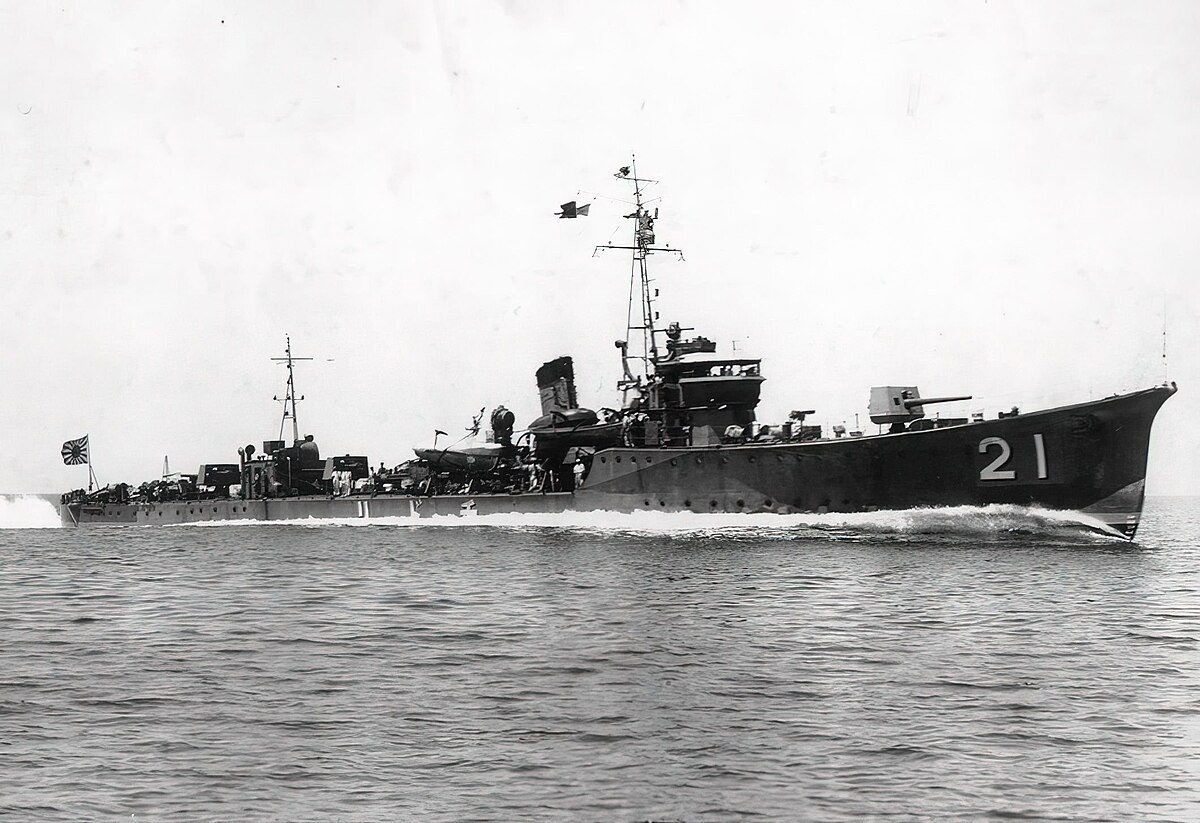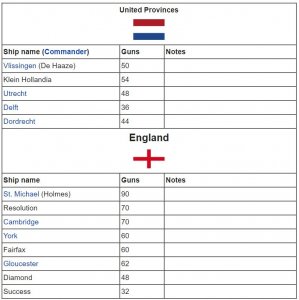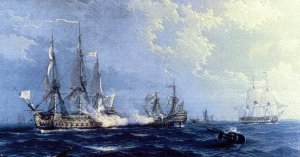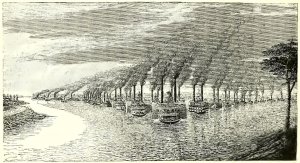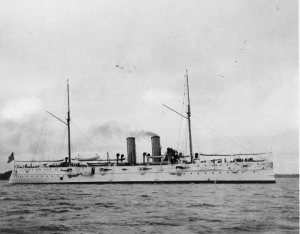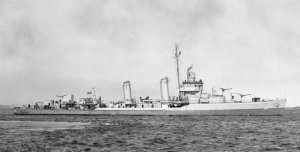Today in Naval History - Naval / Maritime Events in History
12 March 1907 - Iéna – On 12 March 1907, while in drydock in the Missiessy Basin at Toulon, the French battleship suffered a series of internal explosions in her magazine.
The first explosion was caused by Powder B, a nitrocellulose-based propellant in the ammunition, which tended to become unstable with age, and self-ignite. The explosion killed 120 people including two civilians hit by fragments in the suburb of Le Pont Du Las.
Iéna was a
pre-dreadnought battleship of the
French Navy. The ship's
keel was laid in 1898 and she was completed four years later. Her design was derived from the preceding
Charlemagne-class battleships with a heavier secondary
battery and thicker armour. She retained the
tumblehome characteristic of all large French warships of this period that caused stability issues. Upon completion
Iena was assigned to the
Mediterranean Squadron and remained there for the duration of her career. She participated in the annual fleet manoeuvers and made many visits to French ports in the Mediterranean.
While docked for repairs,
Iéna was gutted on 12 March 1907 by a
magazine explosion caused by the decomposition of well-aged
Poudre B propellant. While it was possible to repair her, the ship was not thought worth the time or expense. Her
hulk was used as a gunnery target before it was sold for scrap in 1912.
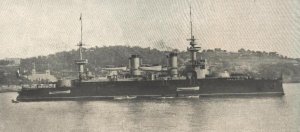 Design
Iéna
Design
Iéna was designed at the request of the Board of Construction (
French:
Conseil des travaux) to follow the
Charlemagne-class ships, whose seakeeping qualities were not entirely satisfactory. But Constructor Thibaudier just modified the
Charlemagne's design with a heavier secondary battery and thicker armour, distributed in a slightly different manner. This increased her displacement by 700 tonnes (690 long tons) in comparison to the older ships and she retained the pronounced tumblehome that was the cause of the stability problems.
General characteristics[edit]
Iéna was longer than her predecessors, at 122.35 metres (401 ft 5 in)
overall. She had a
beam of 20.83 metres (68 ft 4 in) and, at
deep load, a
draught of 7.45 metres (24 ft 5 in) forward and 8.45 metres (27.7 ft) aft. She was only slightly heavier than the
Charlemagne class and displaced 11,688 metric tons (11,503 long tons) normally, and 12,105 metric tons (11,910 long tons) at full load, 700 metric tons more than the earlier ships.
Iéna was fitted with large
bilge keels, but was reported to roll considerably and pitch heavily, although this is contradicted by the ship's captain's report of November 1905: "From the sea-keeping point of view the
Iéna is an excellent ship. Pitching and rolling movements are gentle and the ship rides the waves well."
Propulsion
Iéna used three
vertical triple expansion steam engines built by Les Forges et Chantiers de la Méditerranée, one engine per shaft. Each shaft drove a three-bladed
propeller that was 4.5 metres (14 ft 9 in) in diameter on the wing shafts and 4.4 metres (14 ft 5 in) in diameter on the center shaft. The engines were powered by twenty Belleville
water-tube boilers at a working pressure of 18
kg/cm2 (1,765
kPa; 256
psi). The engines were rated at a total of 16,500
indicated horsepower (12,300 kW) and produced 16,590 ihp (12,370 kW) during the ship's
sea trials.
Iena reached a top speed of 18.11
knots (33.54 km/h; 20.84 mph) on her trials. She carried a maximum of 1,165 tonnes (1,147 long tons) of coal which allowed her to steam for 4,500
nautical miles (8,300 km; 5,200 mi) at a speed of 10 knots (19 km/h; 12 mph). The ship's 80-
volt electrical power was provided by 600-
ampere and 1200-ampere
dynamos.
Armament
Like the
Charlemagne class which preceded her,
Iéna carried her main armament of four 305 mm (12 in), 40-
calibre Canon de 305 mm Modèle 1893/96 guns in two twin-
gun turrets, one each fore and aft. The guns fired 340-kilogram (750 lb) projectiles at the rate of 1 round per minute at a
muzzle velocity of 780 m/s (2,600 ft/s). This gave a range of 12,000 metres (13,000 yd) at the maximum elevation of 15°. The
magazines stored 180 shells per gun, enough for three hours of fighting.
The ship's secondary armament consisted of eight 45-calibre
Canon de 164 mm Modèle 1893 guns, which were mounted in individual
casemates. The guns fired 164.7 mm (6.48 in), 52-kilogram (115 lb) shells at a muzzle velocity of 865 m/s (2,840 ft/s) to a maximum range of 9,000 metres (9,800 yd). A total of 1606 rounds were carried, enough for three hours of fighting at the practical 1–2 rounds per minute per gun.
Iéna also carried eight 100 mm (3.9 in), 45-calibre
Canon de 100 mm Modèle 1893 guns in
shielded mounts on the shelter deck. These guns fired a 12-kilogram (26 lb) projectile at 710 m/s (2,300 ft/s), which could be trained up to 20° for a maximum range of 9,500 metres (10,400 yd). Their theoretical maximum rate of fire was six rounds per minute, but only three rounds per minute could be sustained. 2074 shells were carried to ensure three hours of fire. The guns were 6.26 metres (20 ft 6 in) above the waterline.
Iena's anti-
torpedo boat defences consisted of 16 47 mm (1.9 in) 40-calibre
Canon de 47 mm Modèle 1885 Hotchkiss guns, fitted in platforms on both masts and on the superstructure. They fired a 1.49-kilogram (3.3 lb) projectile at 610 m/s (2,000 ft/s) to a maximum range of 4,000 metres (4,400 yd). Their theoretical maximum rate of fire was fifteen rounds per minute, but only seven rounds per minute sustained. 15,000 shells were kept in the magazines.
[4] Admiral Marquis criticized the arrangements for the 47 mm guns in a 1903 report:
The number of ready-use rounds is insufficient and the hoists are desperately slow. The 47 mm guns, much more so than the large and medium-calibre guns, will have to fight at night; yet these are the only guns without a fire-control system designed for night operations. This is a deficiency which needs to be corrected as soon as possible.
Iena mounted four 450-millimetre (18 in)
torpedo tubes. Two tubes were submerged and the other two were above the waterline. Twelve Modèle 1889 torpedoes were carried, of which four were training models.
Armour
Iéna had a complete waterline armour belt of
Harvey armour that was 2.4 metres (7 ft 10 in) high and tapered from the maximum thickness of 320 mm (12.6 in) that covered 84 metres (275 ft 7 in) amidships to 230 mm (9.1 in) at the ship's ends. The lower edge of this belt was a uniform 120 mm (4.7 in) in thickness. The upper armour belt was in two
strakes, the lower 120 mm thick and the upper 80 mm (3.1 in). Their combined height was 2 metres (6 ft 7 in) amidships. The maximum thickness of the armoured deck was 80 mm and the fore and aft armoured transverse bulkheads were 90 mm (3.5 in) thick. The main turret armour ranged from 278–318 mm (10.9–12.5 in) in thickness with a 50 mm (2.0 in) roof and the ammunition shafts were protected by 250 mm (9.8 in) of armour. The casemates for the 164 mm guns were 90 mm thick and their ammunition tubes had 200 mm (7.9 in) of armour.
The
conning tower face had 298 mm (11.7 in) of armour and its sides were 250 mm thick. Its roof was protected by two layers of armour, each 25 mm (0.98 in) thick. The communications tube was protected by 200 mm of armour.
History
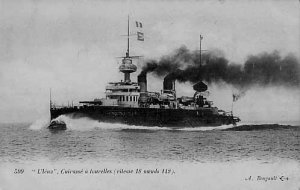
A postcard of
Iena at speed in a calm sea
Iéna was
laid down at
Brest on 15 January 1898 after being authorized on 3 April 1897. She was
launched on 1 September 1898, but did not enter service until 14 April 1902.
Iéna was assigned to the Second Division of the Mediterranean Squadron and sailed for
Toulon five days later. En route, the ship suffered from a number of problems with her
rudder and had to be docked for repairs once she arrived at her destination. After the completion of the repairs the ship began a series of port visits in France and
French North Africa which would be repeated for most of her career.
Iena participated in the
fleet review off
Naples in April–May 1904 on the occasion of the visit of the
President of Francewith King
Victor Emmanuel III of Italy. Afterwards, the Mediterranean Squadron cruised the
Levant, calling in
Beirut,
Suda Bay,
Smyrna,
Mytilene,
Salonika and
Piraeus. In April 1906, she was dispatched to provide assistance to Naples after the eruption of
Mount Vesuvius.
Loss
On 4 March 1907
Iéna was moved into dry dock No. 2 in the Missiessy Basin at Toulon to undergo maintenance of her hull as well as inspection of her rudder shaft. Eight days later, beginning at 1:35 a.m. and continuing until 2:45, a series of explosions began in the port No. 5 100-millimetre magazine of
Iéna which devastated the ship and the surrounding area. Because the ship was in a dry dock it was initially impossible to flood the magazines. The commanding officer of the battleship
Patrie, which was moored nearby, fired a shell into the gate of the dry dock in an attempt to flood it, but the shell ricocheted without holing the gate. The dock was finally flooded when Ensign de Vaisseau Roux (who was killed shortly afterward by fragments from the ship) managed to open the sluice gates. The
French battleship Suffren, moored in the No. 1 dock beside
Iéna, almost capsized under the strength of the blasts.
The origin of the first explosion was traced to
Poudre B, a
nitrocellulose-based propellant used in the ammunition, which tended to become unstable with age, and self-ignite. It was estimated that 80% of the contents of the ship's magazines were the suspect powder at the time of the accident. The explosion and loss of 120 lives, including two civilians killed by fragments in the suburb of Le Pont Du Las, triggered a major scandal, dubbed "the gunpowder scandal" (
French:
l'affaire des poudres). As a result,
Gaston Thomson, the Navy Minister, was forced to resign. A similar accident later caused the loss of the
French battleship Liberté in 1911.
[12] Paul Painlevé, president of the navy committee, appointed a commission of inquiry after the explosion of the battleship
Iéna was followed by that of
Liberté. Captain
Antoine Schwerer was a member of the commission of inquiry and wrote a "Report on Naval Powders" (1912).
Disposal
The multiple explosions gutted the superstructure between the mainmast and the rear funnel and collapsed the superstructure surrounding the mainmast. The ship's side between Frames 74 and 84 was ripped open down to the lower edge of the armour belt and all the machinery in this area was destroyed. After it was estimated that it would take seven million francs and two years to fully repair
Iéna it was decided to
decommission the ship and use her as a
target ship. All useful equipment was removed and she was towed to a mooring off the
Île des Porquerolles where she was used as a target to test the effectiveness of the latest design of
armour-piercing shells beginning on 9 August 1909. After the completion of numerous tests, and with
Iéna close to
foundering, she was towed to deeper water. While under tow
Iéna capsized and sank on 2 December 1909. The rights to the wreck were sold and she was subsequently broken up and
salvaged between 1912 and 1927.

en.wikipedia.org
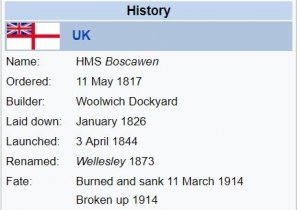
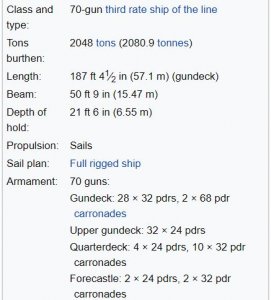
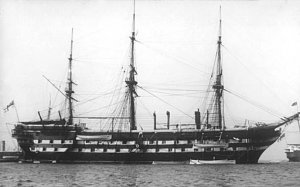
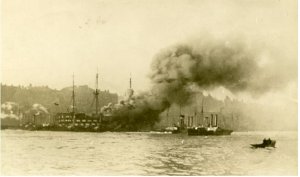
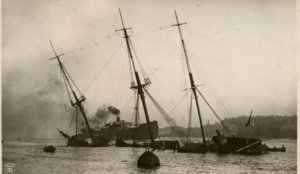
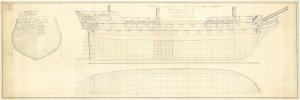
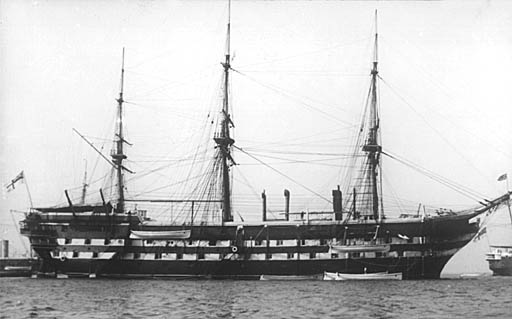
 en.wikipedia.org
en.wikipedia.org











